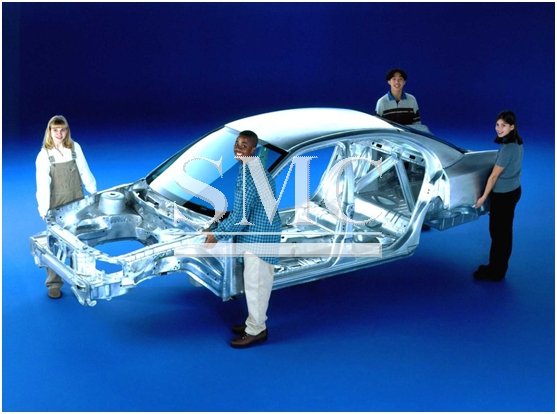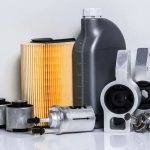As well as direct weight reduction by material substitution, there are additional possibilities for component light-weighting. Aluminium-specific fabrication techniques, such as complex, multi-hollow extrusions or thin-walled, high-strength, vacuum die castings, enable new design solutions.
When Audi designed the A8 model, they had to choose between a steel body-in-white with a mass of 441 kg and an aluminium alternative of 247 kg. Once Audi decided in favour of the aluminium alternative, they could also realise additional weight-saving measures, e. g. a smaller engine or a smaller fuel tank would fulfil the given requirements for the car (acceleration, mileage per tank filling). Audi reported such “indirect” weight savings as 45 kg which is 23% of the direct weight savings of 194 kg. This means that the 247 kg aluminium body-in-white effectively reduces the car weight by 239 kg. Other vehicle studies suggest a secondary weight saving range of 50 – 100%.

Guest contributors are welcome at the Alloy Wiki.It is a weekly wiki and guide on alloy information and processing technology, while also about the vast array of opportunities that are present in manufacturing. Our team of writers consists of a Machining Material Supplier / Machinist / Tool and Die Maker, a Biomedical Engineer / Product Development Engineer, a Job Development Coordinator / Adjunct Professor, and a President and CEO of a manufacturing facility. The Jaguar XE brings new levels of aluminium-intensive lightweight construction and is projected to deliver fuel economy of over 75 mpg* (less than 4 litres/100 km) on EU combined cycle (*subject to certification). The XE uses aluminium-intensive monocoque which accounts for 75% of the vehicle’s structure. The reduction in weight ensures that the XE is the most fuel-efficient Jaguar yet with fuel consumption and CO2 emissions on the NEDC combined cycle of over 75 mpg and less than 100 g/km respectively. The Jaguar XE is also the first car in the world to make use of a new grade of high strength aluminium called RC 5754 which has been developed specifically for the XE. This new alloy features a high level of recycled material and makes a significant contribution to Jaguar’s goal of using 75% recycled material by 2020.
Link to this article:Aluminium used in transport reduces the weight, fuel consumption and greenhouse gas emissions.
Reprint Statement: If there are no special instructions, all articles on this site are original. Please indicate the source for reprinting:Alloy Wiki,thanks!^^


